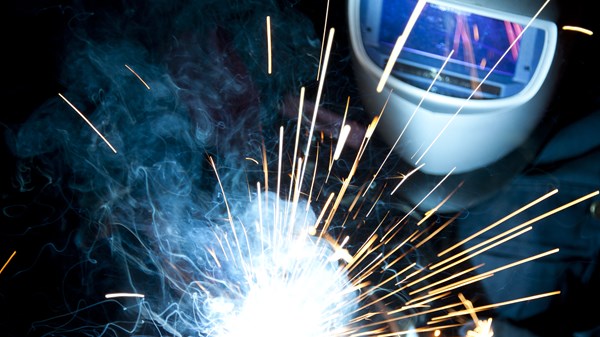Common Issues Found During Welding Inspection Milwaukee and How to Fix Them
Common Issues Found During Welding Inspection Milwaukee and How to Fix Them
Blog Article
A Comprehensive Guide to Welding Assessment Techniques and Ideal Practices for Quality Control in Fabrication Projects
Welding evaluation serves as an essential pillar in ensuring the structural integrity and safety and security of made tasks. Developing efficient practices and a robust quality monitoring system can boost conformity and dependability.
Significance of Welding Assessment
Welding assessment is a critical component in guaranteeing the stability and security of welded structures. The process involves a systematic evaluation of welds to identify any kind of flaws that might endanger the stamina and toughness of the end product. Effective examination is necessary not only for conformity with sector criteria and regulations but also for protecting the health and safety of personnel and the general public.

Additionally, welding inspection offers as a useful tool for continuous enhancement in manufacture procedures. Inevitably, focusing on welding evaluation promotes a culture of high quality guarantee, making sure that jobs satisfy both consumer assumptions and regulative requirements.
Common Welding Inspection Techniques
Numerous techniques are utilized to inspect welds, each tailored to identify particular kinds of defects and make sure quality. Among one of the most commonly used approaches are visual assessment, ultrasonic screening, radiographic testing, magnetic fragment screening, and dye penetrant screening.
Aesthetic evaluation is one of the most straightforward technique, allowing examiners to recognize surface irregularities such as splits, porosity, and undercutting. Ultrasonic screening employs high-frequency audio waves to detect inner defects, providing a thorough evaluation of weld stability. Radiographic screening uses X-rays or gamma rays to produce photos of the weld, disclosing inner flaws that are not visible to the naked eye.
Magnetic fragment testing is particularly efficient for ferromagnetic products, determining surface and near-surface issues by applying electromagnetic fields and using fine particles that show irregularities. Dye penetrant testing involves using a tinted dye to the weld surface, which seeps into splits and is disclosed under ultraviolet light, making it very easy to identify issues.
Each of these techniques plays a vital duty in preserving welding top quality, and the option of a suitable method depends on the particular needs of the fabrication task, consisting of material kind, weld configuration, and the preferred degree of assessment.
Vital Inspection Devices

These tools aid make certain that welds meet the required specs for stamina and longevity. In addition, ultrasonic screening devices are utilized to find internal imperfections without compromising the stability of the weld.
An additional vital tool is the hardness tester, which evaluates the mechanical residential or commercial properties of a weld and establishes its suitability for specific applications. Welding evaluation software program aids in recording findings, assisting in data analysis, and ensuring compliance with market requirements. With each other, these crucial assessment devices develop a comprehensive collection that supports the welding assessment procedure, eventually adding to the quality control of fabrication projects.
Best Practices for Top Quality Assurance
In the pursuit of quality control, implementing best practices is crucial for achieving trustworthy and consistent welding end results. Developing a comprehensive welding quality monitoring system (WQMS) is fundamental. This system needs to encompass defined treatments, requirements, and documents practices see this website that assist every stage of the welding process.
Regular training and certification of welding workers are important. Competent welders with updated knowledge of strategies and safety steps contribute considerably to quality. Furthermore, performing pre-welding evaluations ensures that products and devices satisfy specified requirements, decreasing the possibility of issues.
Including real-time surveillance during the welding procedure enables instant discovery of abnormalities, making it possible for restorative actions to be taken without delay. Post-welding examinations, including visual checks and non-destructive screening (NDT), are important in verifying weld honesty and compliance with industry standards.
Furthermore, maintaining thorough records of examinations, weld criteria, and rehabilitative activities fosters a society of accountability and continual enhancement. Engaging stakeholders in regular quality testimonials can likewise enhance the overall effectiveness of quality control steps. By sticking to these best methods, organizations can dramatically boost their welding high quality assurance initiatives, thereby making sure task success and customer contentment.
Enhancing Safety And Security and Conformity
Accomplishing high requirements in welding quality control normally aligns with the vital of improving safety and compliance within the market. Efficient welding inspection strategies are important in ensuring and recognizing potential threats that all processes follow regulative standards. These strategies not only offer to preserve structural honesty however also shield the wellness and security of workers associated with manufacture jobs.
Executing rigorous examination methods, such as aesthetic evaluations, non-destructive screening (NDT), and detailed documents, establishes a society of safety and security and responsibility. Educating welders and assessors in present security policies and finest techniques is necessary. This makes sure that all employee recognize potential threats and are outfitted to alleviate them.
Furthermore, compliance with market standards, such as those established by the American Welding Culture (AWS) and the International Company for Standardization (ISO), is non-negotiable. Routine audits and evaluations help determine spaces in security steps and promote constant enhancement - Welding Inspection Milwaukee. Eventually, a commitment to enhancing safety and security and conformity not just promotes a much safer working environment official source but additionally brings about exceptional high quality end results and lowered obligation for organizations involved in welding fabrication
Final Thought

Welding inspection offers as an essential column in guaranteeing the structural integrity and safety and security of produced projects.Welding evaluation is a vital component in guaranteeing the integrity and safety and security of bonded frameworks. Ultimately, focusing on welding evaluation cultivates a society of top quality guarantee, making sure that projects satisfy both consumer expectations and governing needs. Together, these vital evaluation devices form a detailed arsenal that supports the review welding assessment process, ultimately adding to the top quality guarantee of construction projects.
In conclusion, efficient welding inspection is important for making certain the architectural integrity and security of made jobs. Welding Inspection Milwaukee.
Report this page